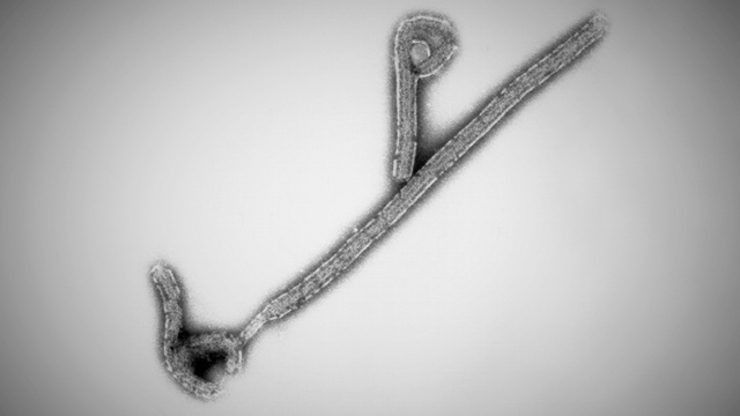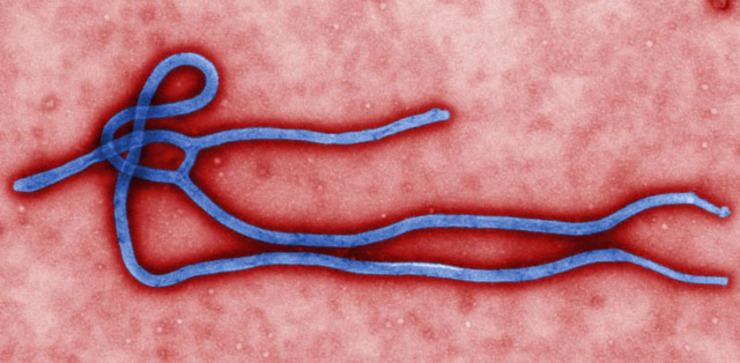SUMMARY
This is AI generated summarization, which may have errors. For context, always refer to the full article.


MANILA, Philippines – Relax. The Philippines is still Ebola-free.
But did you know that the Philippines is the only known geographic source of the Reston ebolavirus (RESTV), the only Ebola virus strain that does not cause disease in humans?
A 2011 paper by Mary Elizabeth Miranda and Noel Lee Miranda, veterinary public health consultants from the Research Institute for Tropical Medicine (RITM), discussed the 2008 RESTV infection in domestic pigs, and 3 earlier documented RESTV outbreaks in monkeys.
The first outbreak was detected in 1989 among laboratory monkeys in the United States (US). The source was traced back to a Philippine exporter that shipped infected monkeys to Virginia, Pennsylvania, and Texas.
The researchers said this outbreak was the first ebolavirus that emerged outside Africa, and the first known natural infection of in non-human primates (NHP). It had a fatality rate of 82% among monkeys.
The second outbreak was in 1992 to 1993, when RESTV was introduced into an NHP quarantine facility in Sienna, Italy.
The monkeys were again from the same Philippine farm and exporter that caused the first outbreak. While no humans became ill that time, two of them had immunoglobin G (IgG) antibodies.
The third outbreak was in 1996, when infected monkeys were again imported from the Philippines to the US.
According to the researchers, one facility reported an active transmission of the RESTV among animals for several months until it was depopulated. Only one of the 251 animal handlers had antibodies, while none of them reported Ebola-like illnesses.
Ebola in pigs
Finally, in 2008, the Philippines’ Department of Agriculture wanted to know what was causing the increase of porcine reproductive and respiratory syndrome cases in the country. It resulted to high mortality in sows and piglets, and abortion in sows
After investigation, it turned out to be the RESTV again, traced back to two commercial farms in the Philippines. About 102 people were then tested, and 6 tested positive for the IgG antibodies.
According to the US Centers for Disease Control and Prevention (US CDC), the clinical significance of the Reston ebolavirus in pigs is unknown. The researchers also noted that human infection of this Ebola strain is rare.
“The detection of REBOV in monkeys and, after more than a decade, in pigs signifies the ability of [RESTV] to infect multiple species,” the researchers wrote.
Reston ebolavirus: The ‘good cousin’
The World Health Organization (WHO) called RESTV the “good cousin” of the virus that’s causing the 2014 West African Ebola outbreak: the Zaire ebolavirus (EBOV). (READ: 5 misconceptions about Ebola)
There are 3 other strains: the Bundibugyo ebolavirus, the Sudan ebolavirus, and the Tai Forest ebolavirus. Like EBOV, they are known to have caused disease in humans.

FULL COVERAGE: EBOLA CRISIS
WHO Representative in the Philippines Julie Hall on Wednesday, October 22, said RESTV behaves differently from its “bad cousins” in Africa – the 4 other strains – and it has never caused human disease. (READ: WHO: PH is systematic, meticulous about Ebola)
“[RESTV] created antibodies in those humans – those very small number of humans that have been detected in the Philippines – but it did not cause disease,” Hall added.
The Ebola virus, which can be transmitted through bodily fluids, causes severe fever, muscle pain, weakness, vomiting, and diarrhea. In some cases, it also causes organ failure and unstoppable bleeding. It can kill victims in just days.
As of October 19, WHO said the 2014 Ebola outbreak has already killed 4,877 out of 9,936 cases mostly in Guinea, Liberia, and Sierra Leone. – Rappler.com
Add a comment
How does this make you feel?
There are no comments yet. Add your comment to start the conversation.